Disclosure: This article contains affiliate links. We may earn a commission from purchases at no extra cost to you, which helps our travel content.
When most travelers picture Zanzibar, their minds immediately conjure images of powdery white sand beaches and crystalline turquoise waters. While these postcard-perfect shores certainly deserve their fame, I've discovered that this Tanzanian archipelago harbors an astonishing diversity of ecosystems and adventures that extend far beyond its coastal fringes. As a marine biologist who's spent considerable time documenting coral health across the Indian Ocean, I've had the privilege of exploring Zanzibar's lesser-known natural treasures with both scientific curiosity and a traveler's wonder. Let me guide your family through eight remarkable outdoor experiences that reveal the true ecological richness of this extraordinary destination.
1. Swimming with Wild Dolphins in Kizimkazi
My fascination with marine mammals drew me to the southern village of Kizimkazi, home to several pods of Indo-Pacific bottlenose and humpback dolphins. Unlike many dolphin experiences worldwide, Kizimkazi offers the rare opportunity to observe these intelligent creatures in their natural habitat, without barriers or enclosures.
Our expedition began at dawn when the sea was calmest and dolphin activity highest. After a briefing on responsible wildlife interaction from our knowledgeable guide, we boarded a traditional wooden dhow and sailed just 20 minutes before spotting the first dorsal fins cutting through the surface.
What makes this experience particularly special for families is witnessing these dolphins' complex social behaviors—mothers teaching calves hunting techniques, playful acrobatics, and sophisticated communication patterns. My research background in marine mammal acoustics made this especially fascinating; I could explain to my travel companions how dolphins use different whistles as individual 'names.'
For optimal viewing, I recommend bringing along a underwater action camera to capture these magical moments without the distraction of handling complex equipment. The dolphins often approach boats out of curiosity, creating perfect photo opportunities.
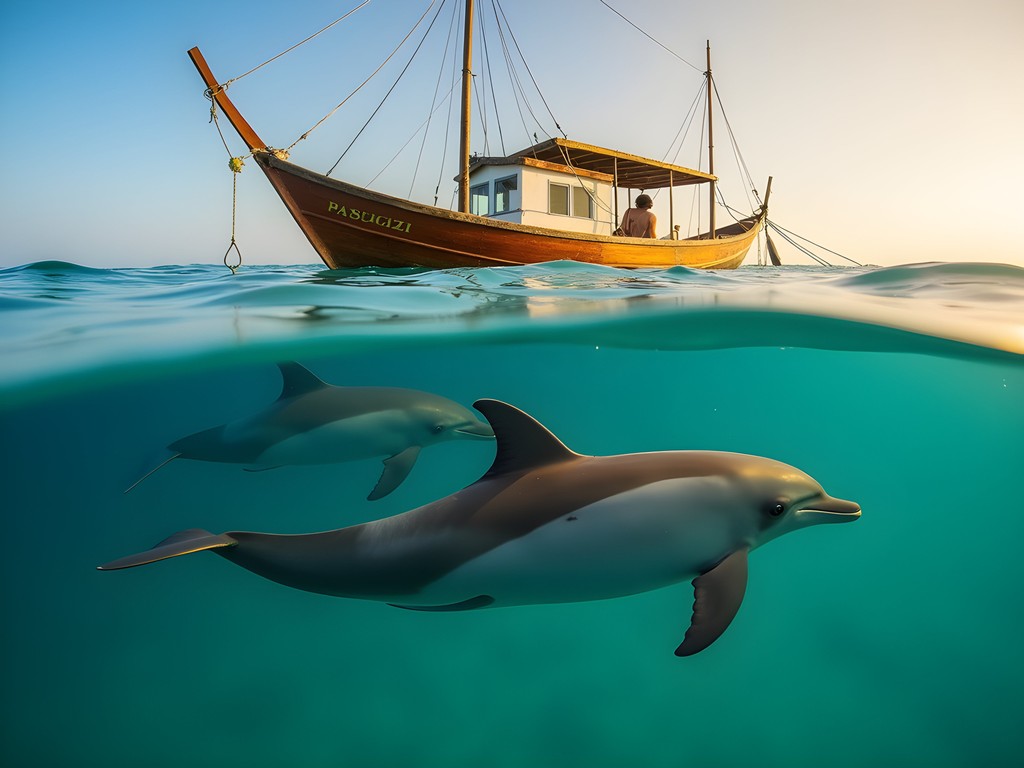
💡 Pro Tips
- Book early morning tours (6:00-8:00 AM) when dolphins are most active and tourist numbers are lower
- Choose operators committed to ethical wildlife practices who maintain proper distance and limit swim time
- Pack motion sickness remedies if your children are prone to seasickness
- Wear biodegradable sunscreen to protect coral reefs from harmful chemicals
2. Exploring the Primeval Jozani Forest
Venturing inland reveals one of Zanzibar's most extraordinary ecosystems: the ancient Jozani Forest. This protected woodland represents the last significant natural forest on Unguja Island and serves as critical habitat for the endemic Zanzibar red colobus monkey—one of Africa's rarest primates with fewer than 2,500 individuals remaining.
Our family expedition through Jozani began on the elevated boardwalk that winds through a remarkable mangrove ecosystem. The transition between habitat types—from saltwater-tolerant mangroves to the humid interior forest—provides a perfect teaching moment for children about ecological adaptation. My background in ecosystem monitoring made this especially fascinating; I found myself instinctively documenting the intricate relationships between species.
The highlight for most families is undoubtedly encountering the red colobus troops. Unlike many primates, these monkeys show remarkable tolerance for human presence, often descending to eye level on low branches, providing extraordinary observation opportunities. Their cinnamon-colored backs, black faces, and pink-hued lips make them particularly photogenic subjects.
To enhance wildlife viewing for the whole family, I recommend bringing a quality pair of compact zoom binoculars. Their lightweight design makes them perfect for children to handle while still delivering exceptional clarity for spotting well-camouflaged forest creatures.
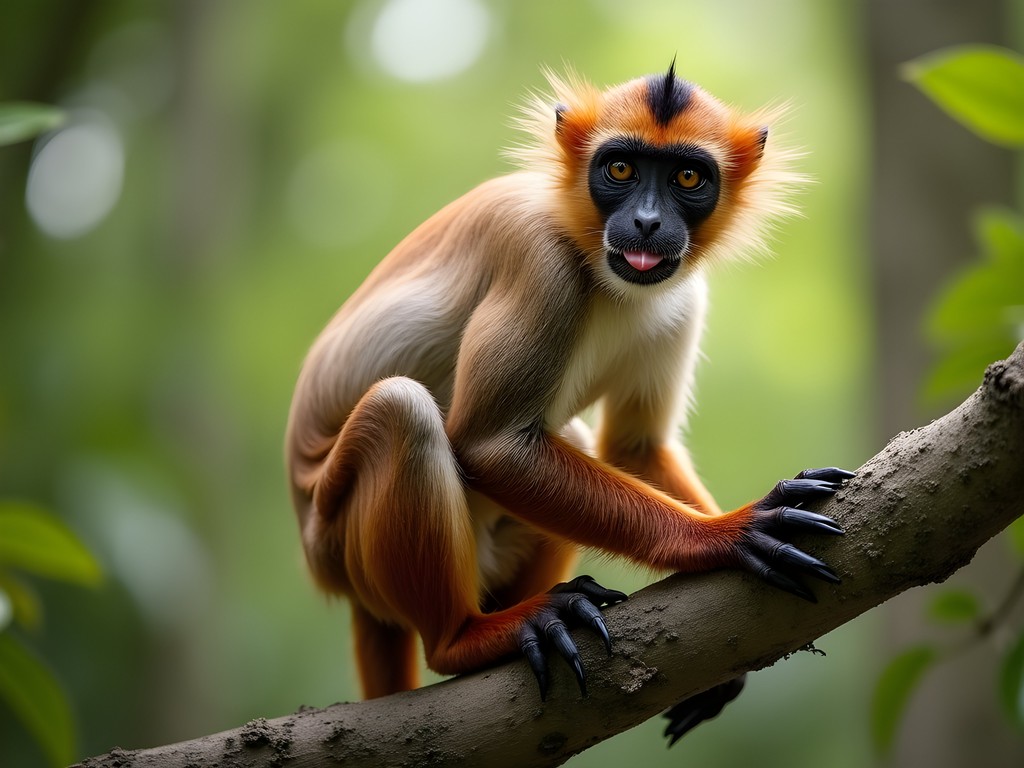
💡 Pro Tips
- Visit early morning or late afternoon when temperatures are cooler and wildlife is most active
- Hire a local guide who can identify medicinal plants and spot well-camouflaged wildlife
- Stay on designated paths to minimize impact on this fragile ecosystem
- Pack insect repellent as the forest can harbor mosquitoes, particularly during rainy seasons
3. Snorkeling the Pristine Mnemba Atoll
As a marine biologist specializing in coral ecosystems, I approach snorkeling sites with a particularly critical eye. The Mnemba Atoll, a marine conservation area northeast of Unguja Island, stands as one of East Africa's most remarkable reef systems—and thankfully, one of its best protected.
Reaching Mnemba requires a boat journey from the northeast coast, typically departing from Nungwi or Matemwe. The atoll's protected status has allowed marine life to flourish in extraordinary abundance. During our family expedition, we encountered over 30 fish species within minutes of entering the water—from tiny damselfish darting among coral branches to impressive Napoleon wrasses patrolling the reef edge.
What makes Mnemba exceptional for families is its gradient of experiences. The inner lagoon offers calm, shallow waters perfect for younger children or novice snorkelers, while the outer reef wall provides thrilling drift snorkeling for more confident swimmers. The visibility often exceeds 20 meters, creating an immersive underwater experience.
For families with younger children, I highly recommend bringing along full-face snorkel masks. These innovative designs eliminate the common problems of traditional masks—no separate mouthpiece means no jaw fatigue, and the full-face design prevents water entry when children inevitably get excited and try to talk underwater!

💡 Pro Tips
- Book with operators who enforce strict no-touching policies to protect coral formations
- Apply reef-safe sunscreen at least 30 minutes before entering the water to minimize chemical runoff
- Pack a lightweight, quick-dry towel and change of clothes for the boat ride back
- Consider bringing underwater identification cards to help children identify common fish species
4. Safari Blue: Island-Hopping Adventure
While Zanzibar offers numerous boat excursions, Safari Blue stands apart as the quintessential family-friendly maritime adventure. This full-day expedition departs from Fumba village on the southwest coast, using traditional handcrafted wooden dhows to explore the Menai Bay Conservation Area.
Our journey began with dolphin spotting (though less reliable than Kizimkazi) before arriving at a pristine sandbank that emerges only during low tide—a transient island playground where children can collect shells and wade in crystalline shallows. The guides provided fascinating explanations about tidal patterns and the ephemeral nature of these sandbank ecosystems.
The day's highlight came when we reached a natural lagoon bordered by mangroves. Here, our guide produced inflatable snorkel vests for the children, ensuring safety while allowing freedom to explore. These adjustable flotation devices gave parents peace of mind while letting kids experience the underwater world with confidence.
After morning explorations, we anchored at Kwale Island for a magnificent seafood feast. Grilled kingfish, octopus, calamari, lobster and prawns were served alongside tropical fruits and local specialties. What impressed me most was the guides' knowledge of sustainable fishing practices—they explained how the seafood was sourced according to seasonal availability and size restrictions to maintain healthy populations.
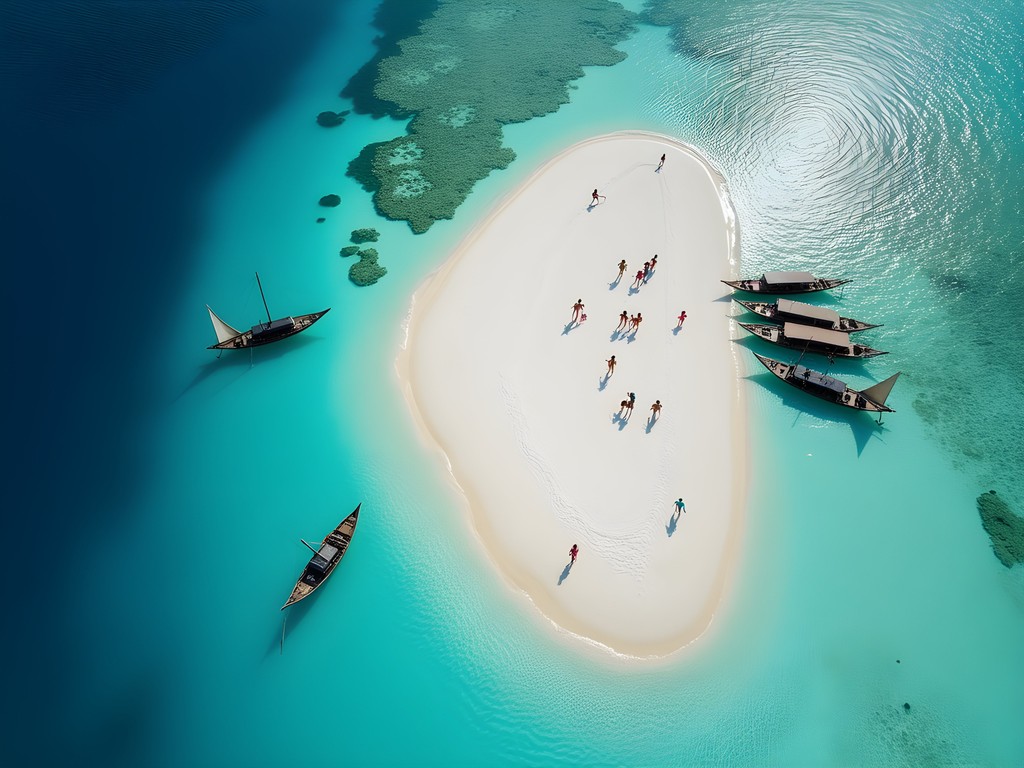
💡 Pro Tips
- Book directly through your accommodation rather than with beach vendors to ensure you join a reputable operator
- Pack extra drinking water as the combination of sun, salt water, and snorkeling can be dehydrating
- Bring cash for optional activities like coconut climbing demonstrations or to purchase handcrafted souvenirs
- Apply waterproof sunscreen frequently – the combination of direct sun and reflection from water increases burn risk
5. Kayaking Through Mangrove Forests
While Zanzibar's eastern and western coastlines present starkly different seascapes, the island's northern reaches offer a third distinct marine ecosystem: extensive mangrove forests. These remarkable coastal woodlands serve as critical carbon sinks, storm buffers, and nurseries for countless marine species—something I emphasize during my university lectures on coastal conservation.
Our family kayaking expedition departed from Nungwi, where we were fitted with water shoes essential for protecting feet from sharp oyster shells and submerged roots when exploring the mangrove ecosystem. These lightweight, quick-drying shoes proved invaluable throughout our Zanzibar adventures, from reef walks to forest hikes.
Paddling through the intricate network of mangrove channels reveals a hidden world that few visitors experience. Our guide explained how these remarkable trees have evolved specialized root systems to thrive in saline conditions and how they create microhabitats for juvenile fish species. Children were particularly fascinated by the mangroves' vivipary reproduction strategy—producing seedlings that germinate while still attached to the parent tree.
The narrow channels occasionally opened into sheltered lagoons where we spotted egrets stalking prey and, in one magical moment, a pair of fish eagles performing their distinctive duet call. The tranquility of these waterways contrasts dramatically with Zanzibar's energetic beaches, offering families a moment of serene connection with nature.
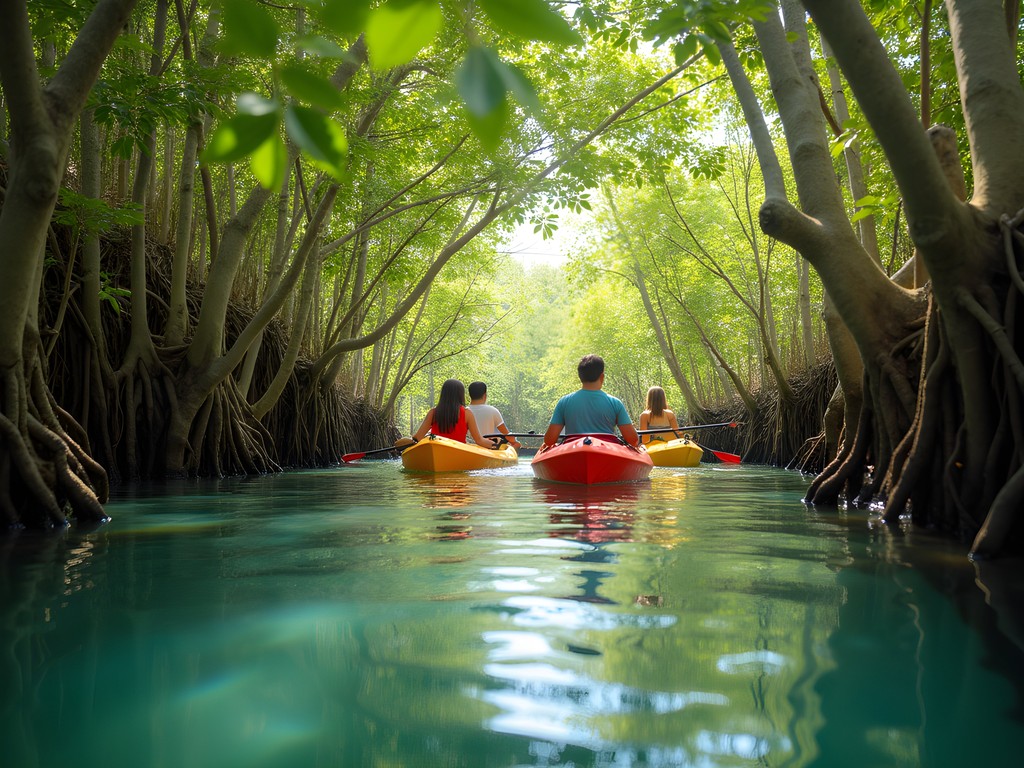
💡 Pro Tips
- Select morning tours when temperatures are cooler and wildlife is more active
- Apply insect repellent as mosquitoes can be present in mangrove environments
- Bring a dry bag for cameras and electronics – splashing is inevitable!
- Choose stable, tandem kayaks if paddling with younger children
6. Rock Climbing and Cave Exploration at Kuza Cave
Zanzibar's geological history reveals itself dramatically at Kuza Cave, a limestone formation near Jambiani on the southeast coast. This natural cavern, formed through centuries of erosion, offers a fascinating blend of cultural significance and natural wonder. Local legends hold that the cave was once used for traditional healing ceremonies, and some residents still consider it a spiritually significant site.
Our family adventure began with a guided hike through rural villages and spice plantations to reach the cave entrance. The approach itself provides valuable context about local agriculture and daily life beyond tourist areas. Upon arrival, our guide provided rechargeable headlamps which proved essential for navigating the cave's darker recesses while keeping hands free for climbing and photography.
The cave interior features a natural freshwater pool that's swimmable year-round, making this an excellent cooling activity during Zanzibar's hottest months. The limestone walls also offer beginner-friendly climbing opportunities with natural handholds and moderate challenges suitable for children approximately eight years and older.
What fascinated me as a scientist was the cave's microecosystem—the specialized insects, unique mineral formations, and the way water has shaped the limestone over millennia. Our guide explained how the cave's formation relates to Zanzibar's position on the African continental shelf and its geological composition, turning a recreational activity into an engaging earth science lesson.
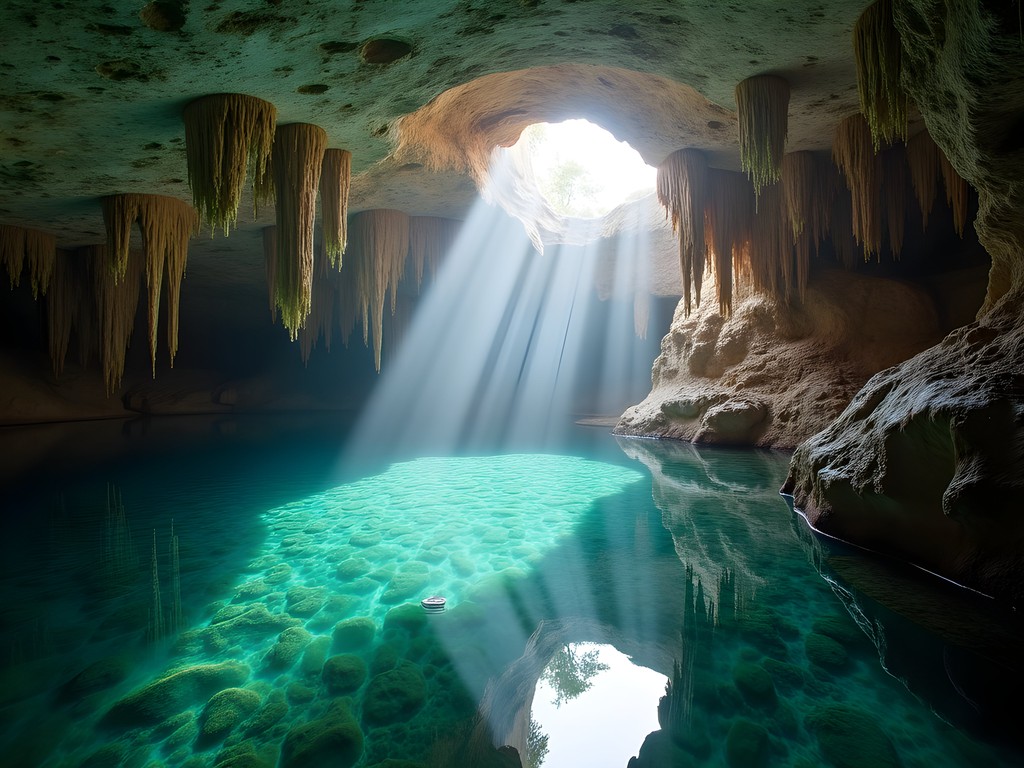
💡 Pro Tips
- Wear sturdy closed-toe shoes with good grip for climbing the sometimes slippery rocks
- Bring a change of clothes if you plan to swim in the cave pool
- Respect the site's cultural significance by following guide instructions about appropriate behavior
- Consider visiting mid-day when the contrast between the hot exterior and cool cave interior is most refreshing
7. Spice Farm Tours: A Sensory Adventure
While perhaps not traditionally categorized as an 'outdoor adventure,' Zanzibar's spice farm tours offer a uniquely immersive nature experience that engages all senses and reveals the archipelago's historical identity as the 'Spice Islands.' As someone who meticulously documents coffee cultivation practices worldwide, I found fascinating parallels in how Zanzibar's spice farming techniques have evolved over centuries.
We selected a family-owned farm near Kidichi village, where three generations work together cultivating everything from vanilla and cinnamon to cardamom and nutmeg. What makes this experience exceptional for families is its interactive nature—children are encouraged to climb cinnamon trees, dig for turmeric roots, and participate in a 'blind smell test' of various spices.
Our guide demonstrated traditional harvesting techniques, explaining how each spice requires specific conditions and handling. The vanilla cultivation particularly impressed me—the orchid flowers must be hand-pollinated within hours of blooming, a delicate process typically performed before dawn.
To preserve these aromatic memories, I recommend bringing a spice grinder back home. This compact electric grinder handles everything from cinnamon sticks to whole nutmeg, allowing families to incorporate Zanzibar's authentic flavors into home cooking—a sensory souvenir that continues giving long after your return.
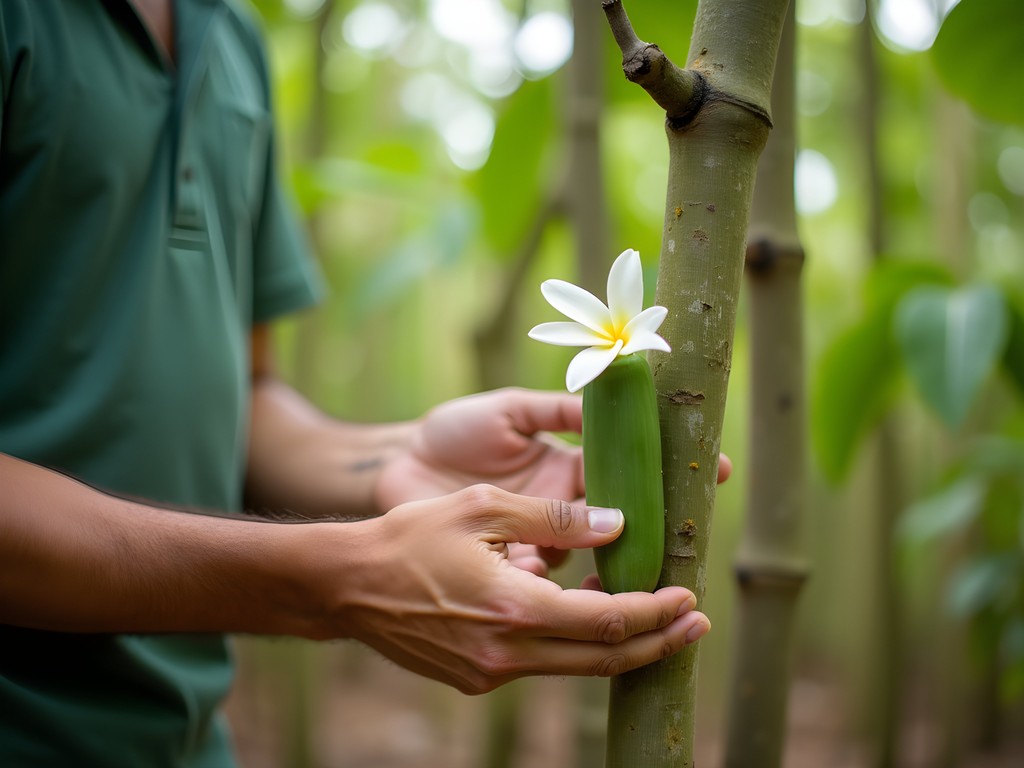
💡 Pro Tips
- Choose smaller, family-operated farms rather than large commercial operations for more authentic experiences
- Visit during morning hours when the aromatic oils in plants are most potent
- Bring small denominations of Tanzanian shillings to purchase spices directly from farmers
- Wear comfortable walking shoes as tours typically involve 1-2 hours of walking through plantation grounds
8. Nocturnal Wildlife Safari in Jozani Forest
While daytime explorations of Jozani Forest focus primarily on the endemic red colobus monkeys, the forest undergoes a remarkable transformation after sunset when a different cast of characters emerges. These specialized nocturnal tours reveal Zanzibar's secretive wildlife that most visitors never encounter.
Our evening expedition began at dusk with a briefing on nocturnal ecology and the specialized adaptations that allow certain species to thrive in darkness. The guide distributed red light headlamps which illuminate wildlife without disrupting their natural behavior or night vision—a technique I've employed during marine turtle monitoring projects.
As darkness descended, the forest awakened with new sounds and movements. Our guide expertly spotted Zanzibar tree hyrax (small mammals surprisingly related to elephants), galagos (bush babies) with their enormous reflective eyes, and the endemic Zanzibar leopard chameleon displaying remarkable color changes even in limited light.
What makes this experience exceptional for families is witnessing children's wonder at discovering an entirely different forest ecosystem that coexists with the daytime world they've already explored. The contrast between day and night biodiversity creates powerful learning opportunities about ecological niches and adaptation.
The scientific highlight for me was observing the complex relationships between nocturnal pollinators and night-blooming plants—a reminder that conservation efforts must consider entire 24-hour ecosystem cycles, not just the species visible during conventional visiting hours.

💡 Pro Tips
- Dress in long sleeves and pants to protect against mosquitoes, which are more active at night
- Keep voices low and movements slow to avoid startling sensitive nocturnal wildlife
- Bring a small notebook for children to record wildlife sightings—many guides provide species checklists
- Consider scheduling this activity early in your trip so children can adjust to time differences when staying up later
Final Thoughts
Zanzibar's identity extends far beyond its justifiably famous beaches, revealing itself as a destination of remarkable ecological diversity and adventure potential for families. From the marine wonders of Mnemba Atoll to the primeval mysteries of Jozani Forest, these eight experiences showcase the archipelago's extraordinary natural heritage while creating meaningful learning opportunities for children.
What strikes me most profoundly about Zanzibar's outdoor adventures is how they naturally integrate cultural context with environmental education. The spice farms illuminate colonial history and global trade networks; the mangrove kayaking reveals indigenous knowledge of coastal ecosystems; the nocturnal safaris demonstrate ecological principles in action. These layered experiences create lasting impressions that transcend typical tourist encounters.
As climate change threatens coral reefs and coastal ecosystems worldwide, destinations like Zanzibar become increasingly precious—living classrooms where families can witness both the fragility and resilience of tropical environments. I encourage you to approach these adventures not just as recreational activities but as opportunities for deeper connection with our natural world. The wonder in a child's eyes when spotting their first dolphin or identifying a spice plant may just inspire the next generation of environmental stewards our planet so desperately needs.
✨ Key Takeaways
- Book wildlife experiences with operators committed to ethical practices and conservation
- Pack specialized gear like reef-safe sunscreen, water shoes, and red-light headlamps for optimal experiences
- Balance beach relaxation with inland adventures to experience Zanzibar's full ecological diversity
- Engage local guides who can provide cultural and environmental context that enriches family learning
📋 Practical Information
Best Time to Visit
June to October (dry season with optimal wildlife viewing conditions)
Budget Estimate
$150-250 per day for a family of four, including accommodations, activities and meals
Recommended Duration
12-14 days to experience both beach relaxation and inland adventures
Difficulty Level
Moderate (Activities Can Be Adapted For Different Ages And Abilities)

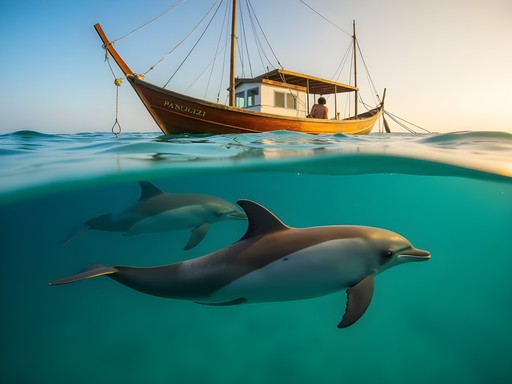

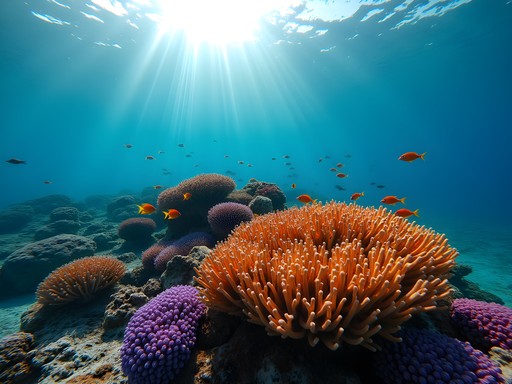
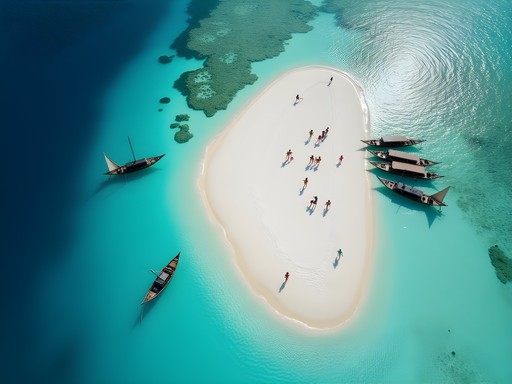
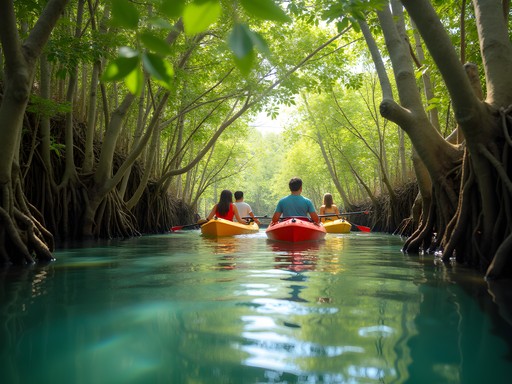
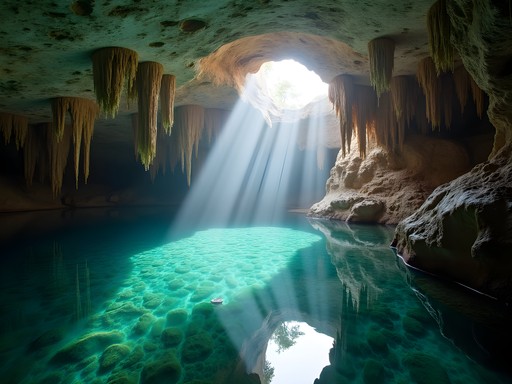


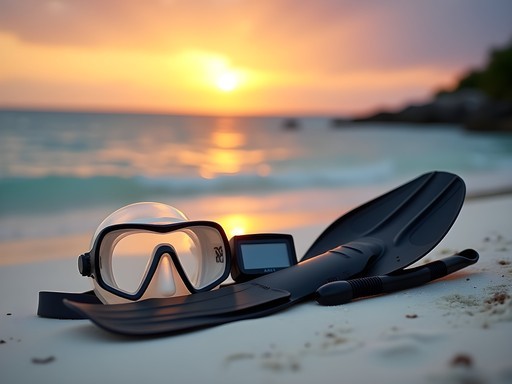






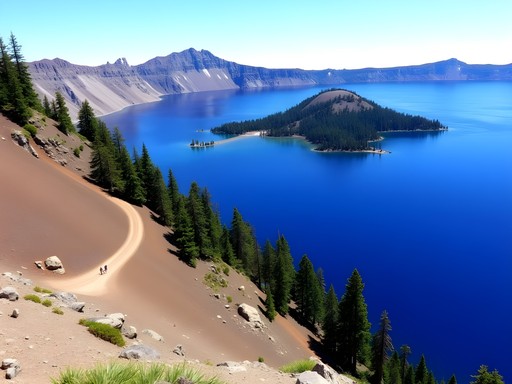
Comments
Taylor Moreau
I've visited Zanzibar six times over the past decade, primarily for business but always extending my stay for leisure. The transformation of tourism on the island has been fascinating to witness. While the article covers excellent activities, I'd add that the spice tours have evolved beyond the typical tourist experience if you seek out smaller, family-run farms. The conservation efforts around the Mnemba Atoll have also improved dramatically since my first visit. For those concerned about overtourism, consider visiting during the 'green season' (March-May) - yes, there's some rain, but the reduced crowds make for a more authentic experience, and many operators offer significant discounts.
moonblogger
Great post! Added Zanzibar to my bucket list!
freeway
If you're planning to snorkel at Mnemba Atoll, I highly recommend bringing your own gear rather than renting. I used my full-face snorkel mask and it was a game-changer - no water leaks and amazing visibility for spotting those sea turtles! The coral there is stunning but bring reef-safe sunscreen as it's pretty exposed. Safari Blue was another highlight - the seafood lunch they prepared on the sandbank was one of the best meals of our trip!
dreamblogger
Good tip about bringing your own gear! Did you book Safari Blue in advance or when you got there?
freeway
We booked through our hotel when we arrived, but in high season I'd probably book ahead. It's pretty popular!
islandadventurer
If you're doing the Jozani Forest, combine it with a visit to the nearby butterfly sanctuary! Much smaller attraction but we had it all to ourselves and the guide was incredibly passionate about conservation efforts.
coolexplorer
Great post! Don't miss the spice tours too - not exactly thrilling but definitely fascinating!
greennomad
Anyone know if these activities are available year-round or is there a best season?
Raymond Hassan
Most are year-round, but June-October is ideal for water activities due to better visibility. The short rainy season (November) can make forest trails muddy, while the long rains (March-May) sometimes affect boat departures. Dolphin sightings are consistent throughout the year.
journeystar
Great post! When's the best time to visit for these activities? Thinking about a trip in February.
Avery Andrews
Thanks journeystar! February is actually a great time - it's during the short dry season. Perfect for snorkeling at Mnemba Atoll especially. The water visibility is excellent and temperatures are warm but not too hot for forest hikes.
Lillian Diaz
This post brings back so many memories! I spent three weeks backpacking around Zanzibar last year and discovered some hidden gems not mentioned here. If you're into more off-the-beaten-path adventures, check out the tidal caves near Kuza Cave in southern Zanzibar. You can only access them at low tide, and the local guides know exactly when it's safe to explore. Also, the night kayaking tours with bioluminescent plankton near Fumba were MAGICAL - literally paddling through glowing water under the stars. Has anyone else tried these?
islandadventurer
The bioluminescent kayaking sounds incredible! How did you book that? I'm heading there in December.
Lillian Diaz
I booked through a small local operator in Stone Town called Zanzibar Outdoor Adventures. They don't have much online presence but any hotel can connect you with them. Ask for Mohammed - super knowledgeable guide!
Dylan Turner
Excellent piece highlighting Zanzibar's diversity. My wife and I did Safari Blue last spring and it was the highlight of our trip. For anyone planning this excursion, I'd recommend bringing your own reef-safe sunscreen as the boat time is extensive. The seafood lunch they prepare on Kwale Island is extraordinary - fresh grilled lobster, calamari, and fish right on the beach. One addition I'd make to this list is kitesurfing in Paje on the east coast - world-class conditions from December to February with consistent trade winds. We stayed at Zanzibar White Sand Luxury Villas which has an excellent kite school for beginners. I used my underwater camera throughout the trip and the footage from both Safari Blue and Mnemba Atoll is stunning.
roamnomad
Just got back from Zanzibar and did most of these activities! The dolphin swimming was magical but I felt a bit conflicted about it - some boats were definitely harassing them. Jozani Forest was my absolute favorite though. The red colobus monkeys came so close! Our guide Mohammed was super knowledgeable about the medicinal plants too. Anyone planning to visit should definitely bring good walking shoes as it gets muddy after rain.
wildphotographer
Did you see the mangrove boardwalk section too? That was my favorite part of Jozani!
roamnomad
Yes! It was amazing how the ecosystem completely changes in such a short distance. The way the roots grow is so fascinating.
Venture X
Premium card with 2X miles, $300 travel credit, Priority Pass